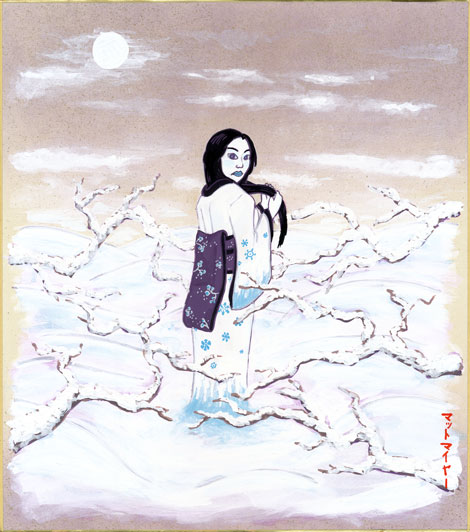The Tanuki is another very special yokai, like the Kitsune I painted earlier this week. It’s importance in Japan can’t really be overstated. This is another creature that, if you visit here, you will see hundreds and hundreds of, wherever you go. Many houses and shops, especially in rural areas, have tanuki statues at their doorsteps. They’re a common character on children’s shows, and in advertisements.
Like kitsune, tanuki are extremely magical creatures. They’re powerful sorcerers, and one of their most famous powers is shapechanging. Probably the most notable power is actually located in — get ready for this — their scrotums. Tanuki have incredibly magical scrotums and testicles, and virtually every likeness of tanuki in Japan comes with a very exaggerated pair of balls. Go ahead, do an image search if you don’t believe me.
Their scrotums really are amazing though. Tanuki can do almost anything with them — parachute, hunt, make music, fight… you name it. In fact, even ancient paintings of tanuki by famous artists like Hokusai depict them doing incredible things with them. In one painting, a tanuki enlarges his scrotum and uses it as a sumo stage, while dozens of tanuki sit on it and watch the competition. In another story, a tanuki decides to masquerade as a shopkeeper to trick humans, and his scrotum actually becomes the entire store — people enter it through a door, talk to the tanuki who is disguised as a shopkeeper (behind the counter, so they can’t see he’s actually connected to a room) and buy illusionary wares made from — you guessed it — scrotum. In that story, the purchaser accidentally dropped his lit cigarette onto the floor, which burned the tanuki and broke the spell, running him out of town. Talk about caveat emptor!
Anyway, here is my tanuki, playing at a festival:

Tanuki
(And if you’re wondering about the lack of testicles in my picture, look again. That’s not a drum he’s playing…)







